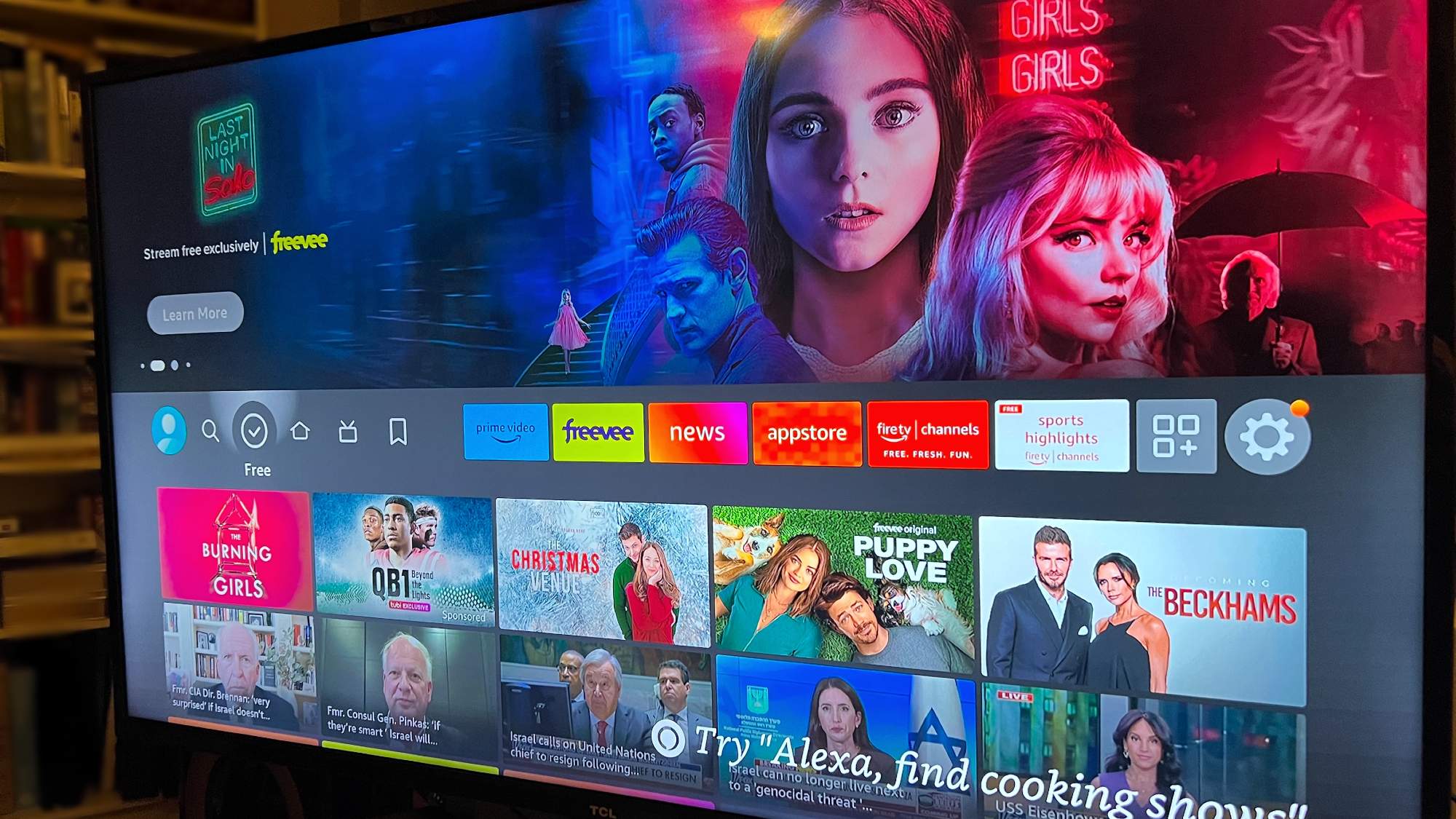Best weightlifting belts 2025, tested and reviewed by our fitness experts
Keep your spine in line with the best weightlifting belts
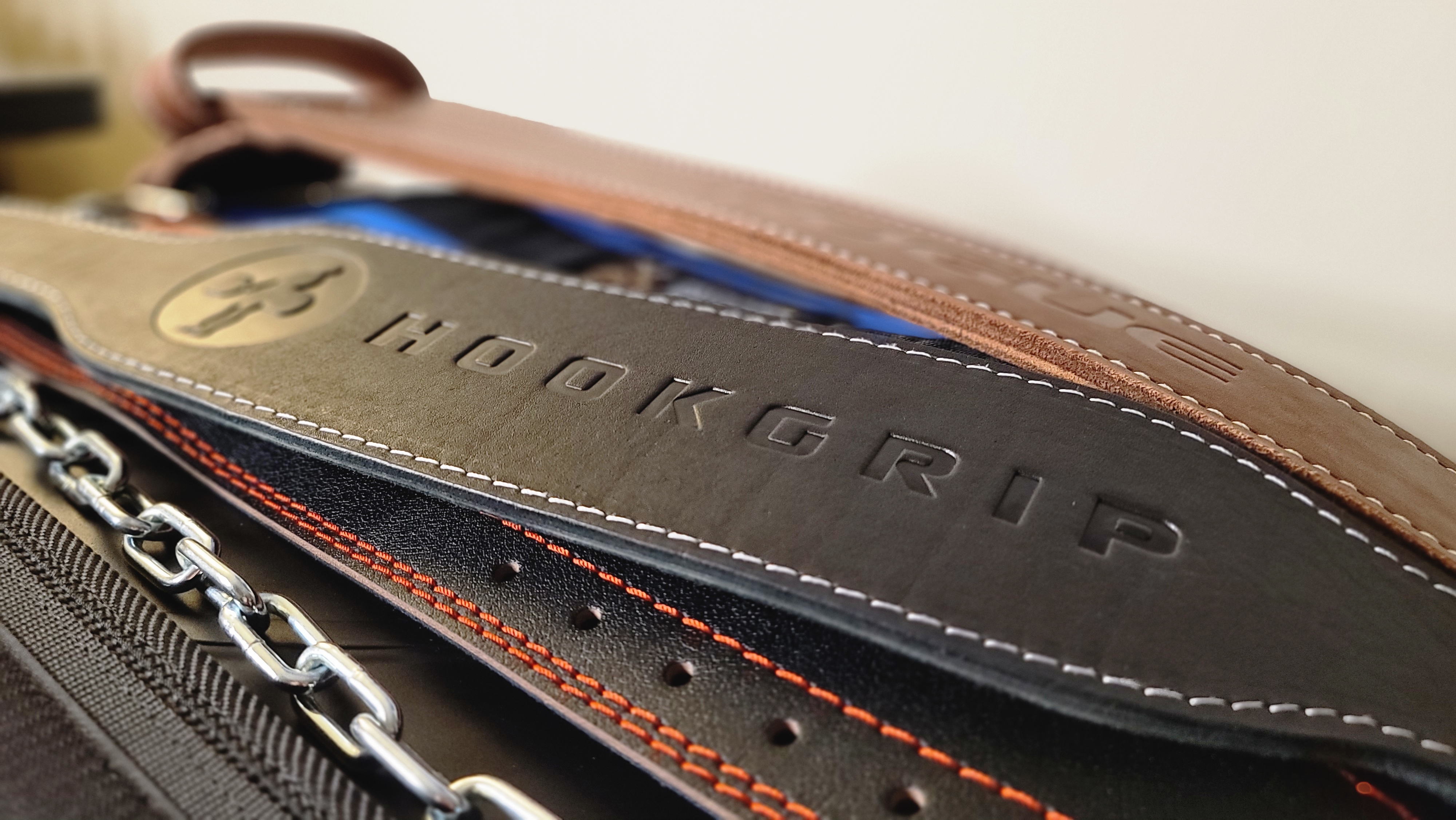
The best weightlifting belts provide extra support to protect your spine during heavy loading like squats, deadlifts, and powerlifting moves like clean and jerks. They wrap around your lower back and fasten securely to help you brace and aid awareness of your torso during lifts.
There isn't much research into the benefits of weightlifting belts, but the heavier you lift weights, the higher the risk for potential injury, so a belt could keep your form tight and back safe. Whether you're a seasoned powerlifter or learning to lift, finding the best weightlifting belt could improve your efforts and boost your form.
We tested some of the most popular options on the market and detailed the pros and cons of each. Our top pick is the Rogue Ohio lifting belt, which our tester scored high for its 4-inch width and 10mm thickness providing quality core support. For those on a budget, our top value pick is the beginner-friendly Dark Iron Fitness belt, which has great flexibility and is USAPL certified.
The best weightlifting belts available right now
Why you can trust Tom's Guide
Here are our top picks for best weightlifting belts in 2025.
Best weightlifting belt overall
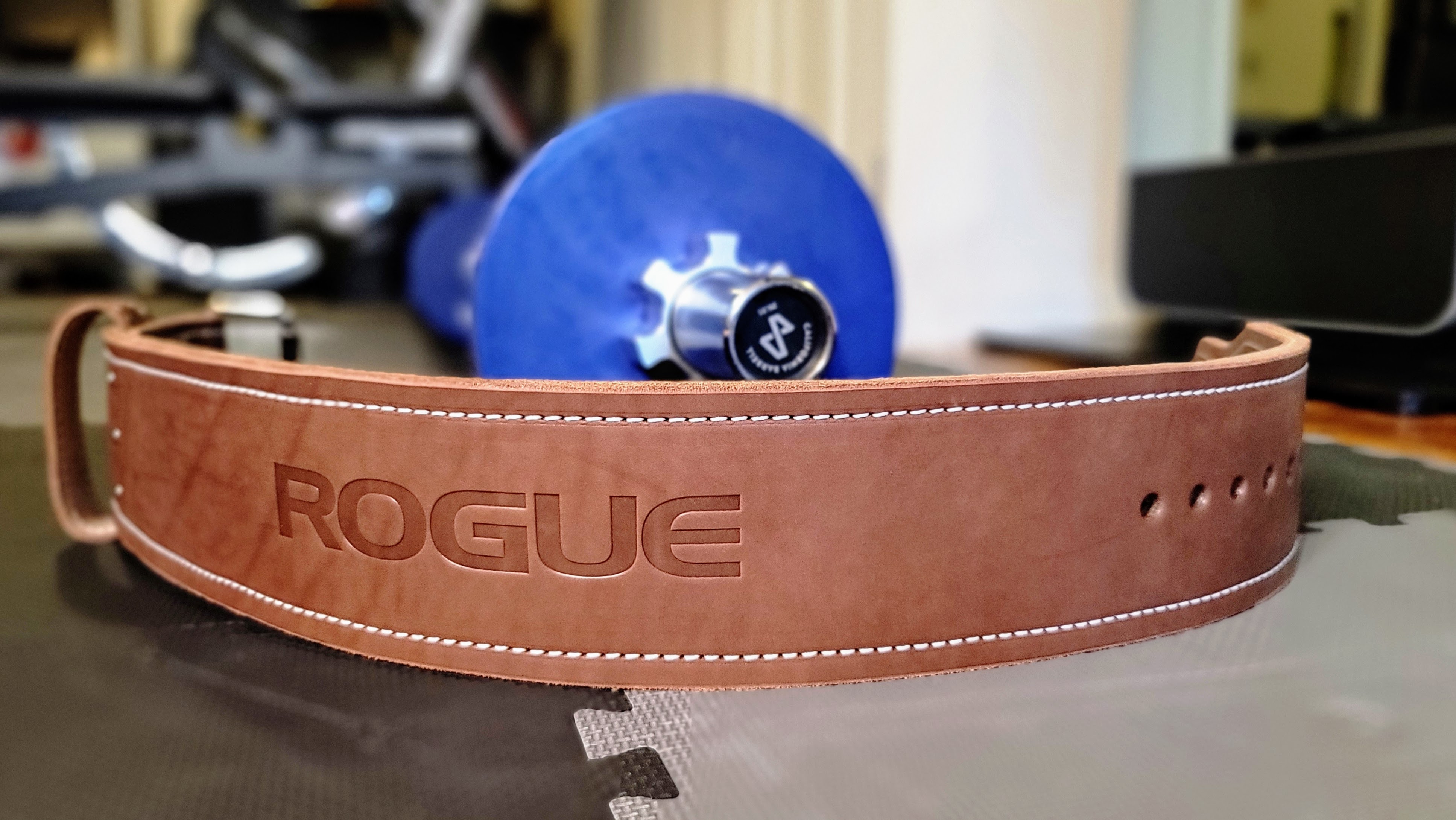

1. Rogue Ohio Lifting Belt
Our expert review:
Specifications
Reasons to buy
Reasons to avoid
If you already know your way around the gym, you’re probably familiar with this brand; Rogue has long been a trusted name in the weightlifting community, and the company is renowned for its strength and conditioning equipment — barbells, power racks, sleds, you name it. In fact, they’re the official equipment supplier of the CrossFit Games, USA Weightlifting, the Arnold Strongman Classic, and the World’s Strongest Man competition.
Looking for a more traditional weightlifting belt that isn’t pulling any punches? The Rogue Ohio Lifting Belt is a common pick for professional athletes across the board, and Ohio looks like it ate your favorite tuxedo for breakfast. Available in five lengths and made from 10-millimeter-thick vegetable-tanned American leather, this 4-inch wide belt is meant to ease stress in your lower back while simultaneously reducing the potential for long-term injury in your spine. And it’s popular for a reason.
During testing, the Rogue Ohio felt nice and snug around the waist, though even after several uses the leather is stubbornly stiff (it comes with the territory). That’s just fine since that initial stiffness only adds to the overall support, but until the leather wears in, this weightlifting belt may be a little tricky to unbuckle. Not a deal-breaker by any means.
The flawlessly reinforced stitching and single-prong buckle keep everything in place, allowing me to eke out that last ounce of energy moving from shrugs to squats to overhead presses. The entire belt feels like part of a horse saddle — which is a good thing. (Horse saddles can handle a lot more stress than anything my monkey-man muscles can muster, after all.)
If powerlifting is in your future, you can’t do much better than the Rogue Ohio Lifting Belt.
Best weightlifting belt for beginners
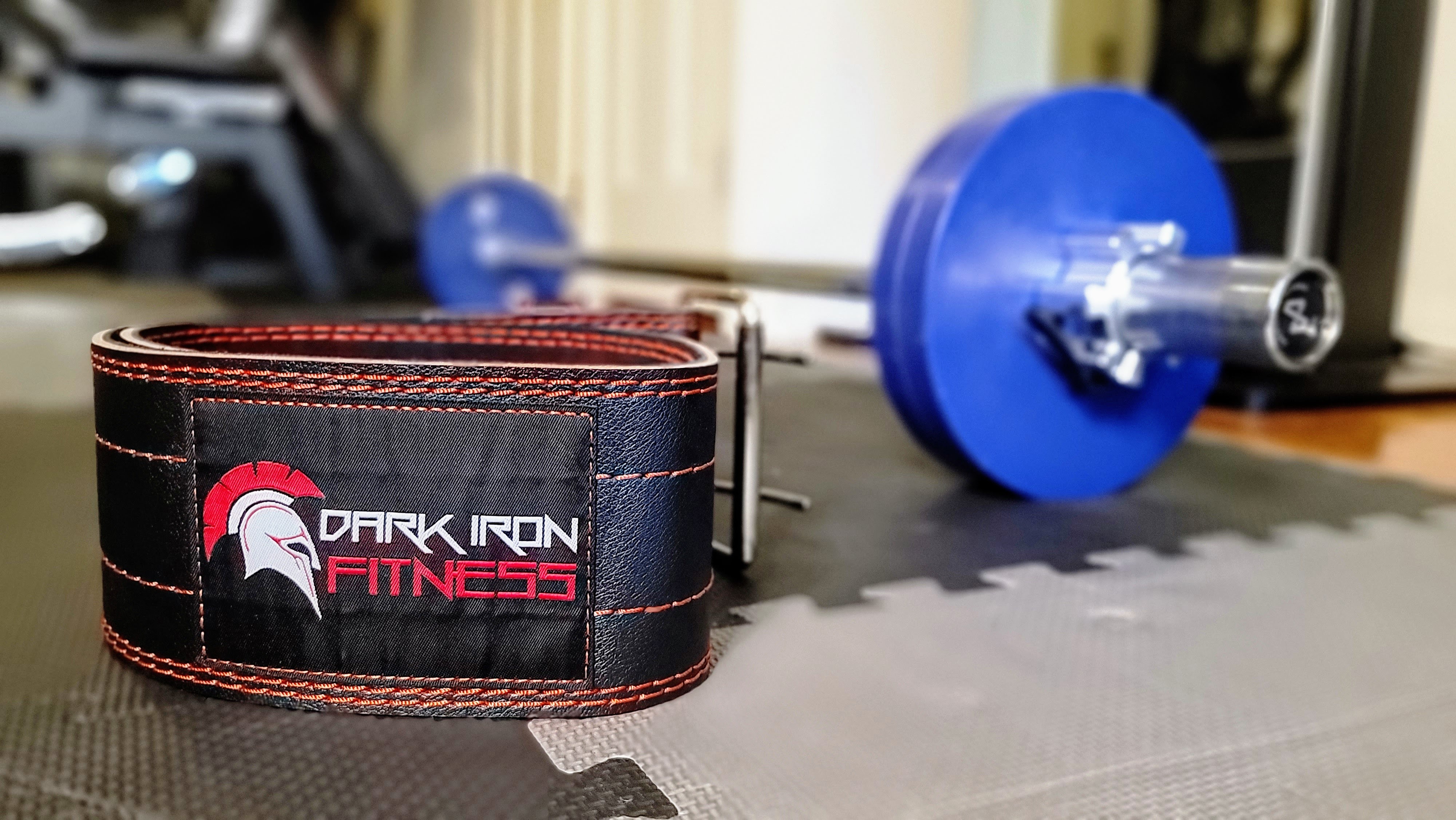
2. Dark Iron Fitness Weightlifting Belt
Our expert review:
Specifications
Reasons to buy
Reasons to avoid
Designed to be flexible yet uber-strong, the Dark Iron Fitness Weightlifting Belt is ideal for all kinds of strength training. USAPL-certified for both male and female athletes, these belts are constructed from premium buffalo hide leather that won’t break, tear under pressure, or wear out leading up to the big competition. That checks off all the right boxes so far.
Going for the gold? Dark Iron Fitness belts have a 600-pound weight limit and generous 4-inch width; 4 millimeters of thickness keeps your core tight while providing just the right level of comfort and support. The company claims their belts could potentially add 10 percent of power to your lifts, eliminating potential back pain in the process. (As long as you put in the work, that is.)
The Dark Iron Fitness Weightlifting Belt might be the same width as the Ohio Rogue, but at just 4mm thick, it’s got roughly half the bulk, and from my perspective, half the stiffness right out of the gate. I like the double stitching, too, and the double-pronged buckle stayed nice and snug throughout each exercise. It never felt like the belt was going to slip whatsoever, though the leather’s edges dug into the skin a bit during squats. Leather takes a while to become fully pliable, but by the time we'd finished the third set of squats, the reinforced construction already felt broken in.
And let’s not forget about the price. Premium belts can cost upwards of $100, but the Dark Iron Fitness Weightlifting Belt represents a solid value, to boot.
Best budget-friendly weightlifting belt
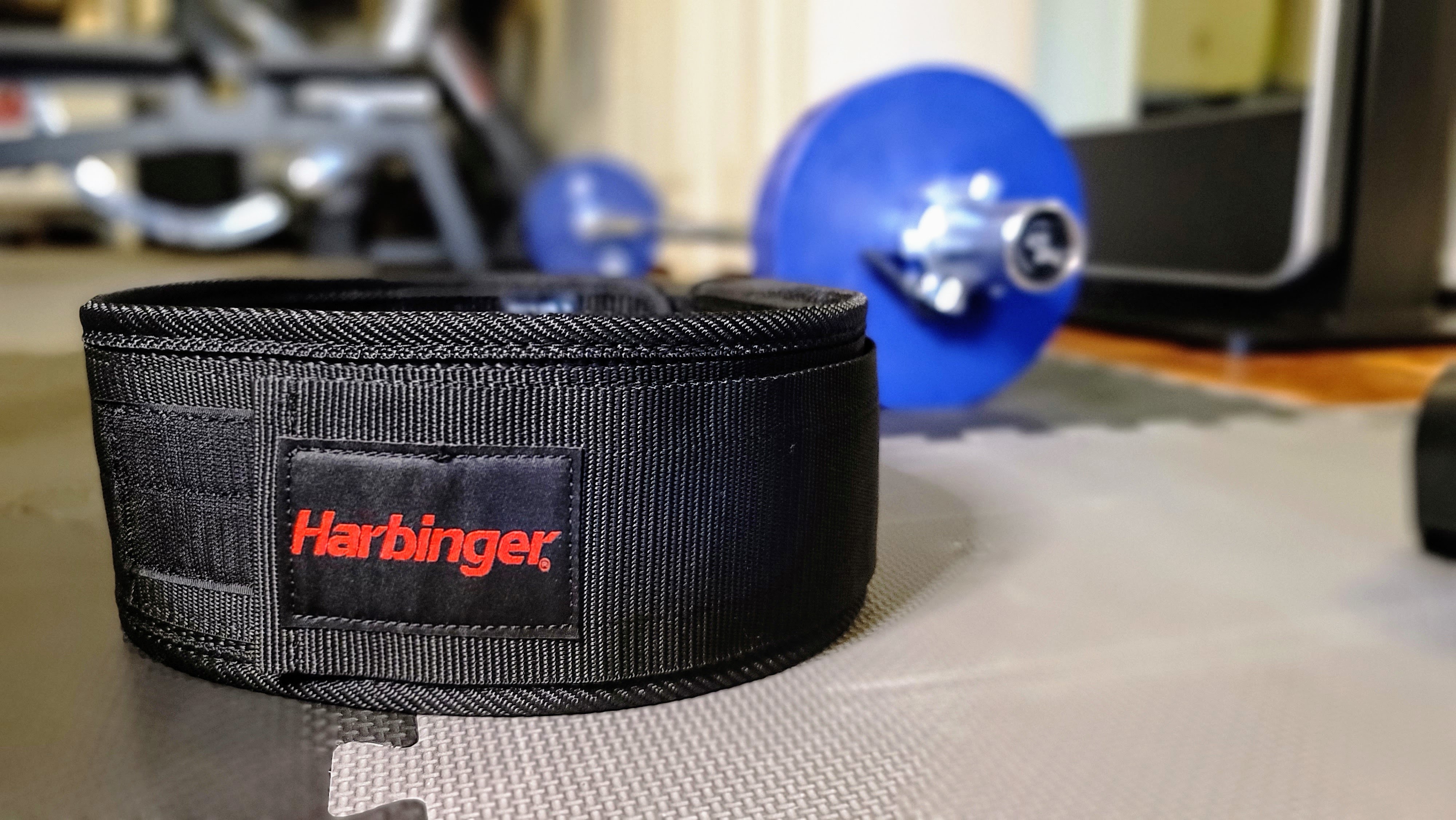
3. Harbinger 4-Inch Nylon Weightlifting Belt
Our expert review:
Specifications
Reasons to buy
Reasons to avoid
While many of the best weightlifting belts feature leather-and-steel construction, you’ll often pay upwards of $100 for such premium materials. Gym safety doesn’t have to cost an arm and a leg, though, and the Harbinger 4-inch Nylon Weightlifting belt is perfect for non-professional athletes who are just looking for more support and stabilization in their gym routine. (Without getting any cows involved.)
You won’t find many powerlifters or Olympic competitors wearing nylon belts, but there’s a lot to like about going synthetic. For one, leather isn’t on everyone’s shortlist, and you’ll get plenty of core support from manmade materials.
In Harbinger’s case, a durable 346-count nylon web flexes around your waist for maximum comfort, and the heavy gauge steel buckle is easy to adjust for a custom fit. In short, Harbinger keeps things pretty simple, and this weightlifting belt should get the job done for most gym-goers.
The uniform 4-inch width is adjustable via the 3-inch support strap, which seals the deal with Velcro and a roller buckle, as opposed to a traditional pronged design. The former is more customizable, and the nylon was marginally more flexible than the leather competitors I tested.
While we appreciated the Hookgrip belt for general comfort and support, Harbinger’s nylon construction definitely allowed for more movement during testing, especially since it’s easier to adjust the latter belt on the fly. For the casual athlete, this weightlifting belt might be all you need, especially at this price.
Best dip weightlifting belt

4. DMoose Dip Belt with Chain
Our expert review:
Specifications
Reasons to buy
Reasons to avoid
Whereas the weightlifting belts above are all about back support, the DMoose Dip Belt was designed to help you push through even the most beastly of (upper) bodybuilding barriers.
If you’re not familiar with dip belts, here’s how they work: you wrap the strap loosely around your torso, attach a nearby dumbbell or weight plate to the built-in chain — allowing it to dangle squarely between your legs — and voila! You’ve just added a bunch of dynamic resistance to your previously boring pull-ups, chin-ups, dips, and sumo squats.
Constructed from sweat-resistant neoprene that’s held together with secure saddle stitching, the DMoose Dip Belt is six inches wide in the middle, which adds plenty of extra padding for your lower lumbar as you raise and lower your body.
Dip belts are an understated workout tool for any home gym, though they require a power tower of some kind for most exercises; they’re great for increasing stamina, endurance, and overall gains. (Heck, when utilized correctly, the DMoose Dip Belt can even improve your posture.
To get a feel for the DMoose Dip Belt, we used it to perform several sets of weighted dips using a home gym power tower, increasing the weight incrementally. The thick neoprene padding felt comfortable against the lumbar spine during each set, with the extra weight dangling securely between the legs.
We nearly forgot how much harder dip belts make you work by adding just a few extra pounds to your frame; they sure change the game for any bodyweight exercises you’re usually into. The carabiners on each end of the chain look a little flimsy, but that’s an easy upgrade if you want to replace them.
How we test the best weightlifting belts
To put these weightlifting belts through their paces, we created a controlled workout consisting of three different barbell exercises — squats, overhead presses and deadlifts.
We looked for comfortable and durable construction, high-quality stitching, strong buckles and excellent core support, along with a decent price.
We used just enough weight to wake up the muscles and activate the core, forcing each belt to support our writer's lower back. Mind you, it takes a while to break in a brand-new leather belt, but a good one should be comfortable almost immediately.
| Exercise | Set 1 | Set 2 | Set 3 |
| Squats (Parallel) | 65lbs x 15 reps | 85lbs x 10 reps | 105lbs x 5 reps |
| Overhead Press | 55lbs x 15 reps | 65lbs x 10 reps | 85lbs x 5 reps |
| Deadlifts | 85lbs x 15 reps | 105lbs x 10 reps | 105lbs x 10 reps |
| Weighted dips | 5lbs x 15 reps | 10lbs x 10 reps | 15lbs x 5 reps |
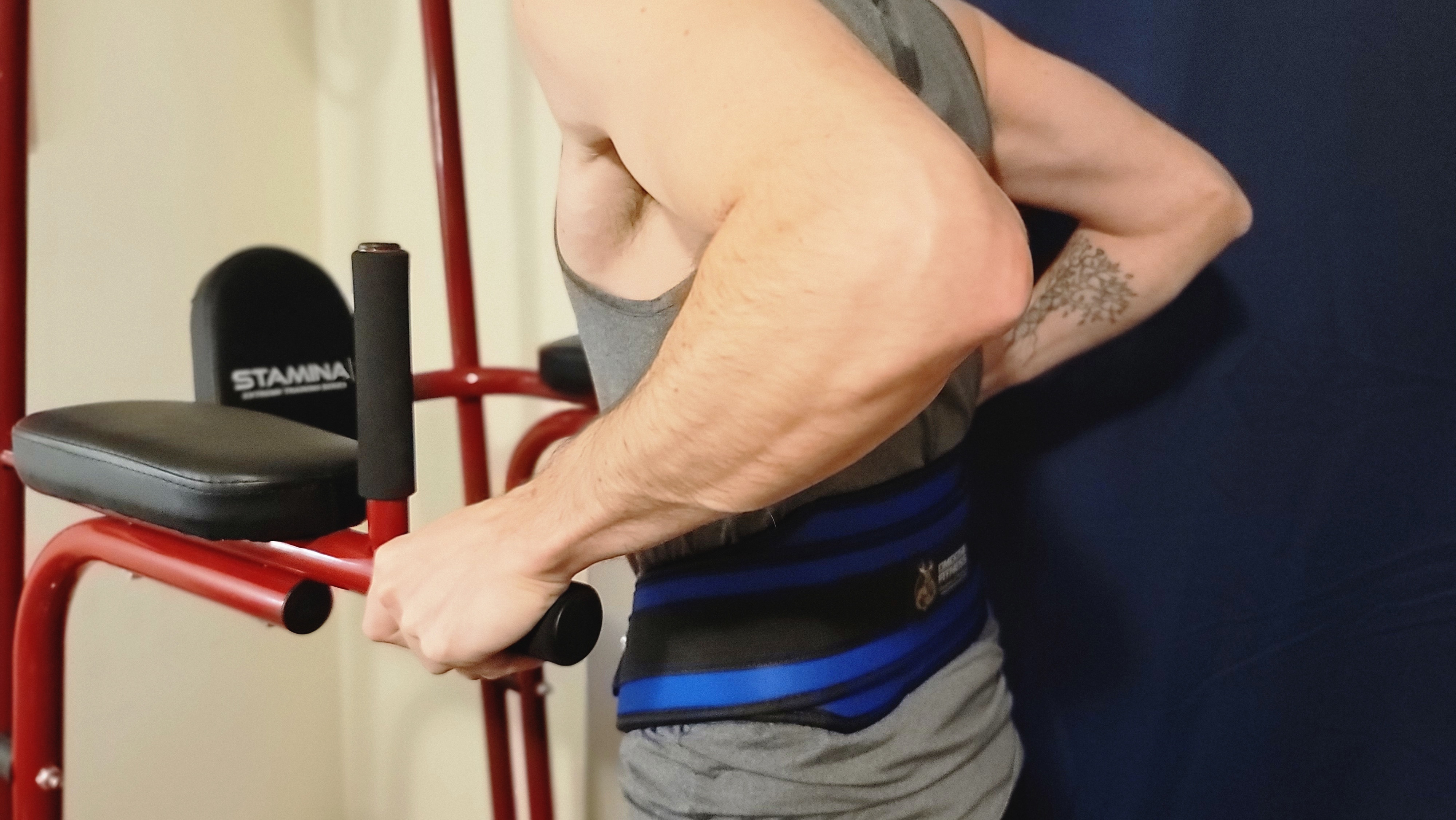
As mentioned above, weightlifting belts can be an semi-extraneous gym accessory for the average gym member, depending on your fitness hustle. There are a variety of things to consider before buying a belt.
Q&A
Do weightlifting belts work?
Weightlifting belts add pressure to your lower abdomen, reminding you to keep your core engaged as you lift. This can help you move with better form.
As you accomplish heavier and heavier lifts, you’ll benefit from using a weightlifting belt to provide extra core support as you finish those last soul-sucking reps. For more casual athletes, however, this is a highly subjective question based on your personal physiology and specific fitness discipline.
Some argue that weightlifting belts could prevent weightlifters from practicing to brace properly, relying too heavily on a belt and not learning proper form.
The combination of intra-abdominal pressure and increased back support can boost your overall core stability, leading to heavier lifts. If that’s what you’re going for.
Wearing a weightlifting belt all the time is hardly a healthy practice, since it prevents you from performing certain movements that fully engage the core. It’s a topic that’s up for debate, but if you don’t perform Olympic-style lifts regularly, you probably don’t need a belt, unless you want the extra back support.
What belts do pro powerlifters use?
We have it on good authority that the REP USA premium lifting belt is popular. It's 4 inches wide and 10 millimeters thick and is also certified for USAPL and IPF powerlifting competitions. Although we haven't tested it, the Rogue Ohio lifting belt, which our tester scored high, is also 4 inches wide and 10mm thick, so it's a durable pick.
What kind of weightlifting belt is best?
Weightlifting belts generally fall into three major categories. Powerlifting belts have a uniform width all the way around (typically measuring 10 millimeters thick and 4 inches wide), and are favored by powerlifters and strongmen. Bodybuilding belts are meant for Olympic lifters and recreational athletes; the tapered width narrows around the waist, with thicker posterior sections that follow the torso’s natural curvature. Velcro belts are made from synthetic materials that result in less intra-abdominal pressure when compared to bodybuilding and powerlifting belts.
If you can, take a trip to your local sporting goods store to test out which style of belt is most comfortable for you. Every body is different, and every fitness journey is unique.
What kind of fastening mechanisms are available?
Be it buckle, lever, or Velcro, your locking mechanism of choice mostly comes down to personal preference, though some fasteners have a quicker release than others. Just make sure everything clicks, slides, or locks securely in place when you strap the belt on.
What belt material should you choose?
Powerlifting purists may prefer a traditional leather belt, but there are plenty of nylon-based options that get the job done just as well. Leather is stronger and tends to hold up longer over time (with proper upkeep), while nylon is far easier to break in right from the get-go.
How much do weightlifting belts cost?
Weightlifting belts vary from around $30 for a cheaper model, to up to $100 for a more premium leather belt. How heavy-duty you need the belt to be depends on how often you plan on using it, and you can pick up a decent one for less than $50. Just remember: you get what you pay for.
Sign up to get the BEST of Tom's Guide direct to your inbox.
Get instant access to breaking news, the hottest reviews, great deals and helpful tips.

Sam Hopes is a level 3 qualified trainer, level 2 reiki practitioner and senior fitness writer at Tom's Guide. She is also currently undertaking her Yoga For Athletes training course. Sam has written for various fitness brands and websites over the years and has experience across brands at Future such as Live Science, Fit&Well, Coach, and T3.
Having worked with fitness studios like F45 and Virgin Active, Sam now primarily teaches outdoor bootcamps, bodyweight, calisthenics and kettlebells. She also coaches mobility and stretching-focused classes several times a week and believes that true strength comes from a holistic approach to training your body.
Sam has completed two mixed doubles Hyrox competitions in London and the Netherlands and finished her first doubles attempt in 1:11.
- Jane McGuireFitness editor
- TJ FinkContributing Editor
-
SS44 Reply
Hello. I would love to have you take a look at the options from Pioneer. They basically make a belt that is best in the market in each category: 1) best powerlifting belt is the Pioneer Cut (best made, stock belts are best value in the world, and they have patented half inch hole spacing for best fit ever).admin said:Just because you’re not an aspiring Olympian doesn’t mean you shouldn’t consider one of these best-in-class weightlifting belts.
The best weightlifting belts in 2022 : Read more
2)best bodybuilding belt is Pioneer Cut Training belt (same reasons as above)
